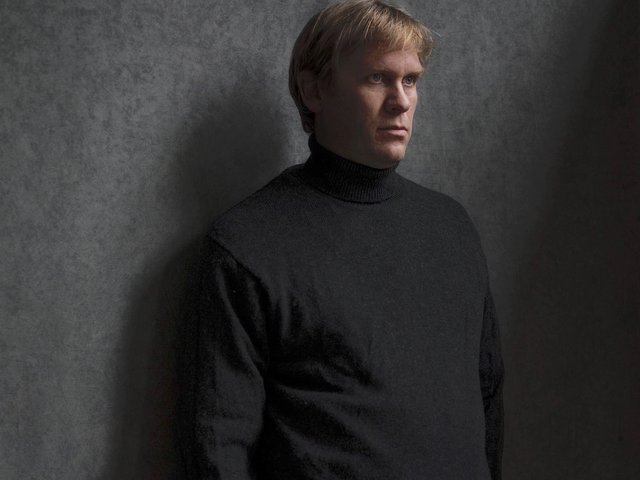In the swirling vortex that is social media, it is a constant challenge for users to create content that will grab people’s attention. Andrey Zakirzyanov’s videos that animate famous works of art, such as Vincent van Gogh’s Café Terrace at Night (1888), are one of those rare types of social media posts.
“We discovered Zakirzyanov’s account by stumbling upon it on Instagram—his work immediately stopped us in our tracks,” says Sydni Myers, the senior manager of social media at the National Gallery of Art (NGA) in Washington, DC, who has since commissioned videos from the artist for the museum. “His unique ability to bring paintings to life while still preserving those beautiful, painterly aspects of the work really caught our eye.”
As an artist working across multiple media, Zakirzyanov started creating his animations simply out of an “artistic urge”, he says. He animated many of Van Gogh’s most famous works including The Potato Eaters (1885) and The Yellow House (1888), and began posting them on Instagram in December 2023. They have since received millions of views and been shared by art organisations such as the Van Gogh Museum in Amsterdam and Unesco.
Many commenters on Zakirzyanov’s Instagram account have asked if his work is made using artificial intelligence (AI), since image-to-video generators have proliferated recently, but the artist makes the videos by hand using traditional 3D-modelling software.
“AI generates new elements that kill the original energy of the painting,” Zakirzyanov says. “The main thing I was trying to achieve in all of my videos is to keep the original texture, brush strokes, outlines and contours, because those small details keep the essence there. I try to make the movements very subtle because I really respect the artists’ original ideas.” Depending on the complexity of the piece, each video can take Zakirzyanov more than a month to make.
Creating the videos by hand also allows Zakirzyanov to bring some of his own artistic flair to each piece. In his animation of Café Terrace at Night he imagines some of the characters in the street to be dancing and he even adds a subtle nod to Banksy on the walls of one of the buildings (“because maybe Banksy’s grandad was there at that time”, he quips).
Animating trends
The NGA has published two of Zakirzyanov’s videos on its social media accounts to promote the exhibition Paris 1874: The Impressionist Moment (until 19 January 2025), which looks at the origins of the art movement and includes works by Paul Cézanne, Claude Monet and Berthe Morisot among others. The first video, posted in September, animated Pierre-Auguste Renoir’s painting Pont Neuf, Paris (1872). The busy scene captures people, carriages and carts crossing the oldest bridge in the French capital in the midday sun. Zakirzyanov’s video adaptation pans across the Pont Neuf and zooms in on some of Renoir’s characters as they pass by, including one glamorous-looking lady dressed in black and carrying a parasol. The faces are blank, as Renoir painted them, and the texture of the original paint remains. The second video, posted in October, is of Édouard Manet’s The Railway (1873), and it tenderly focuses in on the face of the woman and the small puppy that she is holding.
According to Myers, these two videos have garnered around 4.9 million organic views and almost 250,000 engagements, and brought in more than 20,000 new followers on the NGA’s Instagram account alone. “It’s really exciting to see that kind of response,” Myers says. “These numbers show us that people are looking to connect with art in new and unexpected ways.”

One of Renoir’s characters in motion
Courtesy Andrey Zakirzyanov
The commissioned videos are part of a wider content strategy at the NGA to work with more content creators online “who use their creativity to relay art history in innovative ways”, says Myers. Another artist the museum has worked with on animated videos of paintings is Rino Stefano Tagliafierro. In 2022, he created several works for the NGA, including one that showed the flowers blooming in the recently rediscovered work Still Life with Flowers in an Alabaster Vase and Fruit (1783) by Anne Vallayer-Coster.
The video even won a Webby—an award for excellence on the internet—one of four that the NGA received for its digital content this year. “The [NGA] has set the standard for innovation and creativity on the internet,” said Nick Borenstein, the general manager of the Webby Awards. “These awards are a testament to the skill, ingenuity and vision of its creators.”
While some comments on social media bemoan the need to mess with masterpieces, others express their amazement. For Myers, the videos aim to “truly reflect and attract the nation” and are all about making fine art more accessible. “A painting by Leonardo da Vinci or Monet, for most people, isn’t always something they see as a part of their everyday life. But billions of people are already engaging, learning and discovering on social media. When we do this, we’re able to connect with people who may have never heard of the National Gallery before,” she says, adding that there are many more collaborations with Zakirzyanov and other creators planned for the coming months.
- Andrey Zakirzyanov's animations can be viewed on Instagram






